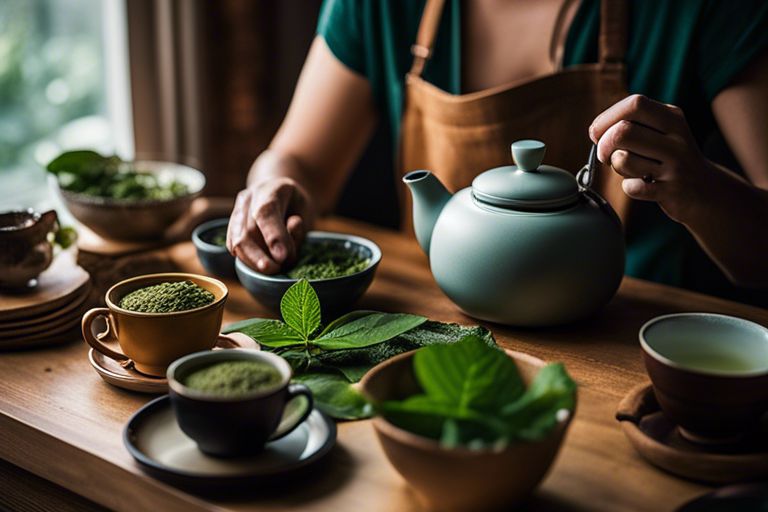Deprecated: mb_convert_encoding(): Handling HTML entities via mbstring is deprecated; use htmlspecialchars, htmlentities, or mb_encode_numericentity/mb_decode_numericentity instead in /home/users/kratomfiles/www/kratomfiles.com/wp-content/plugins/quick-adsense-reloaded/includes/template-functions.php on line 3552
Kratom (Mitragyna speciosa) is a tropical evergreen tree native to Southeast Asia, including Thailand, Malaysia, Indonesia, and Papua New Guinea. Its leaves have been used traditionally for medicinal purposes for centuries. The plant contains alkaloids such as mitragynine and 7-hydroxymitragynine, which interact with opioid receptors in the brain.
These compounds are associated with pain relief, mood enhancement, and stimulation effects. Kratom has gained attention as a potential natural alternative for managing chronic pain, anxiety, depression, and opioid withdrawal symptoms. Kratom is available in various forms, including dried leaves, powder, capsules, and extracts.
One popular method of consumption is brewing kratom tea. This method is preferred by many users as it offers a milder experience compared to consuming raw kratom. The brewing process involves extracting active compounds from leaves or powder and infusing them into hot water.
This technique allows for a more controlled release of alkaloids, potentially resulting in a smoother onset and longer duration of effects compared to other consumption methods.
Key Takeaways
- Kratom is a natural herb with potential benefits such as pain relief, increased energy, and improved mood.
- Different kratom strains have different effects, so it’s important to choose the right one for your desired outcome.
- Kratom leaves can be brewed into tea by steeping them in hot water, or kratom powder can be used for a quicker preparation.
- Brewing the perfect kratom tea involves finding the right balance of water temperature, steeping time, and kratom dosage.
- Enhance the flavor and effects of kratom tea by adding sweeteners, citrus, or other herbs and spices to customize your experience.
Choosing the Right Kratom Strain for Tea
Understanding Kratom Strains
When selecting a kratom strain for tea, it’s crucial to consider the desired effects and individual preferences. Kratom strains are typically categorized based on their vein color and region of origin, each offering unique properties and alkaloid profiles.
Selecting Strains Based on Effects
For a more energizing and stimulating experience, white vein kratom strains such as White Maeng Da or White Thai are popular choices. These strains are known for their uplifting and euphoric effects, making them suitable for morning or daytime consumption. On the other hand, red vein kratom strains like Red Bali or Red Borneo are favored for their relaxing and pain-relieving properties, making them ideal for evening or nighttime use. Additionally, green vein kratom strains such as Green Malay or Green Indo offer a balanced combination of both stimulating and sedating effects, making them versatile options for any time of the day.
Considerations for Tea Preparation
It’s also important to consider the potency and dosage requirements of different kratom strains when preparing tea. Some strains may require a lower or higher dosage to achieve the desired effects, so it’s crucial to start with a conservative dose and adjust accordingly based on individual tolerance and sensitivity. Furthermore, experimenting with different strains and their combinations can provide a personalized experience tailored to specific needs and preferences.
Preparing the Kratom Leaves or Powder

Before brewing kratom tea, it’s essential to prepare the kratom leaves or powder properly to ensure optimal extraction of the active compounds. If using dried kratom leaves, they can be crushed or powdered using a grinder to increase the surface area and facilitate better infusion in hot water. For kratom powder, there’s no need for additional processing, as it’s already in a fine consistency that dissolves easily in water.
It’s important to note that the finer the texture of the kratom leaves or powder, the easier it will be to extract the alkaloids and achieve a more potent brew. In addition to preparing the kratom itself, it’s also crucial to gather high-quality water for brewing the tea. Using filtered or spring water is recommended to avoid any potential contaminants or impurities that may affect the taste and overall experience of the tea.
Bringing the water to a near-boiling temperature is sufficient for extracting the alkaloids from the kratom without compromising their integrity. Once the water is heated, it’s time to move on to the brewing process to create a flavorful and potent kratom tea.
Brewing the Perfect Kratom Tea
| Metrics | Data |
|---|---|
| Water Temperature | Boiling water (212°F or 100°C) |
| Kratom Quantity | 2-4 grams per cup |
| Brewing Time | 15-20 minutes |
| Strain | Use a fine strainer or cheesecloth |
| Flavoring | Optional: lemon, honey, or sugar |
Brewing kratom tea is a straightforward process that involves steeping the prepared kratom leaves or powder in hot water and allowing them to infuse for a specific duration. To begin, bring the filtered or spring water to a near-boil in a pot or kettle. Once the water reaches the desired temperature, reduce the heat to a gentle simmer before adding the measured amount of kratom leaves or powder into the water.
It’s important to stir the mixture continuously to ensure even distribution and prevent clumping of the kratom particles. After adding the kratom into the hot water, allow it to simmer for approximately 10-15 minutes while stirring occasionally. This allows ample time for the alkaloids to be extracted from the kratom and infused into the water, resulting in a potent and flavorful brew.
Once the steeping process is complete, remove the pot from the heat source and strain the kratom tea using a fine mesh strainer or cheesecloth to separate the liquid from any remaining plant material. The strained kratom tea can then be poured into a cup or teapot for immediate consumption or stored for later use.
Enhancing the Flavor and Effects of Kratom Tea
While kratom tea has a distinct earthy and slightly bitter taste, there are several ways to enhance its flavor and overall experience. Adding natural sweeteners such as honey, agave nectar, or stevia can help mask the bitterness of kratom and create a more palatable brew. Additionally, incorporating citrus juices like lemon or orange can provide a refreshing tanginess that complements the herbal notes of kratom tea.
To further enhance the effects of kratom tea, some enthusiasts choose to incorporate other herbal ingredients known for their synergistic properties with kratom. For example, adding chamomile or lavender can contribute calming and relaxing effects that complement the sedating properties of certain kratom strains. On the other hand, combining kratom with stimulating herbs like ginger or ginseng can amplify its energizing and mood-boosting effects for a more invigorating experience.
Proper Dosage and Consumption of Kratom Tea

Factors Affecting Dosage
The ideal dosage can vary depending on individual tolerance, body weight, metabolism, and sensitivity to kratom alkaloids.
Recommended Dosage
It’s recommended to start with a low initial dose of 1-2 grams of kratom powder or leaves when brewing tea and gradually increase as needed based on personal response.
Caution and Moderation
For those new to kratom consumption, it’s important to be mindful of individual tolerance levels and avoid consuming excessive amounts that may lead to adverse reactions. Overconsumption of kratom can result in nausea, dizziness, drowsiness, or even more severe side effects in some cases. Therefore, it’s crucial to approach kratom tea consumption with caution and moderation to ensure a safe and enjoyable experience.
Safety Precautions and Potential Side Effects of Kratom Tea
While kratom has been valued for its therapeutic benefits, it’s essential to be aware of potential safety precautions and side effects associated with its consumption. Some individuals may experience adverse reactions to kratom, especially when consumed in high doses or combined with other substances. Common side effects of kratom consumption may include nausea, vomiting, constipation, dizziness, dry mouth, and increased urination.
Furthermore, prolonged and excessive use of kratom may lead to dependence, tolerance, and withdrawal symptoms when discontinuing its use. It’s important to use kratom responsibly and avoid frequent or heavy consumption to minimize these risks. Additionally, individuals with pre-existing medical conditions, pregnant or nursing women, and those taking medications should consult with a healthcare professional before using kratom to ensure its safety and compatibility with their health status.
In conclusion, understanding how to prepare and consume kratom tea responsibly is essential for maximizing its benefits while minimizing potential risks. By choosing the right kratom strain, preparing it properly, brewing it into a flavorful tea, enhancing its effects with complementary ingredients, and consuming it at an appropriate dosage, individuals can experience the therapeutic properties of kratom in a safe and enjoyable manner. It’s important to approach kratom consumption with mindfulness and respect for its potency to promote a positive and sustainable relationship with this natural botanical remedy.
If you’re interested in learning more about the benefits of kratom, you should check out this article on how to harness kratom as a natural pain management solution. It provides valuable information on the potential uses of kratom for pain relief and how to incorporate it into your wellness routine.
FAQs
What is kratom tea?
Kratom tea is a traditional Southeast Asian beverage made from the leaves of the kratom tree. It is known for its stimulating and sedative effects.
How is kratom tea made?
To make kratom tea, the leaves of the kratom tree are steeped in hot water. Some people also add flavorings or sweeteners to improve the taste.
What are the potential benefits of kratom tea?
Some people believe that kratom tea can help with pain relief, relaxation, and mood enhancement. However, more research is needed to confirm these potential benefits.
Is kratom tea legal?
The legal status of kratom varies by country and region. In some places, it is legal and regulated, while in others it is banned. It is important to research and understand the laws in your area before making or consuming kratom tea.
What are the potential risks of kratom tea?
Kratom has the potential for dependence and abuse, and it can also cause adverse effects such as nausea, vomiting, and constipation. It may also interact with certain medications. It is important to use kratom tea responsibly and consult with a healthcare professional if you have any concerns.









